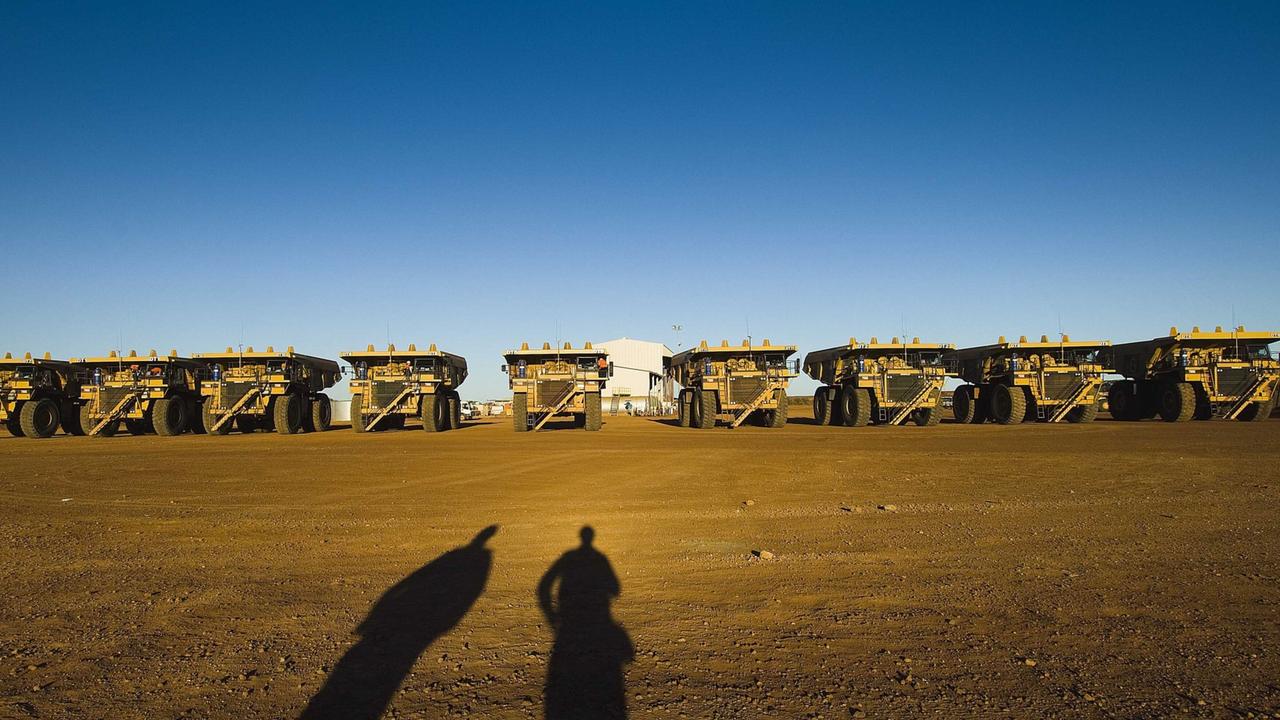Australia’s potential boon amid iron ore collapse
As one Aussie industry teeters on the edge there’s a ray of hope that could see the Australian economy transformed.
ANALYSIS
In all the various eras of empires and great powers throughout history, ours is perhaps one of the most unique. Through globalisation, the ability to manufacture finished goods and raw materials has spread across the world in an attempt to make the lowest cost item possible.
The idea of outsourcing vast amounts of industrial capacity and entire supply chains to rival nations or empires has never really been a feature of previous geopolitical cycles, yet has become a common part of the current status quo over the past four decades in particular.

Now as tensions continue to rise and access to various commodities and manufactured items become bargaining geopolitical bargaining chips, the challenging fundamental reality of handing a rival nation the keys to great swathes of what was once the west’s industrial and commodities production capacity has begun to dawn.
From Beijing banning the export of equipment to process some rare earth minerals, to the United States attempts to block the export of powerful computer chips to China which are used for high AI end development, globalisation as we have known it for decades is looking shaky.
Australia’s place in this new world
As it becomes increasingly clear that the global geopolitical status quo of some of the world’s largest companies is on the decline, the United States and other western nations have looked to Australia to secure supply’s of minerals critical to the supply chains of everything from mobile phones to missiles.
In October, Prime Minister Anthony Albanese announced the federal government would provide a $2 billion expansion in financing for the development of production of minerals it deemed critical from a strategic and/or renewable energy transition perspective.
Of the 30 minerals on the government’s critical minerals list, six were singled out in a recent International Energy Agency (IEA) report on the raw material requirements for a clean energy transition. Those were lithium, graphite, cobalt, nickel, manganese and rare earth elements.

It explored the demand for these six minerals based on two scenarios. One entitled ‘Stated Policies’ was based on where demand will likely go based on today’s policies and policy announcements. The other was entitled ‘Sustainable Development’ which would put demand in line with what is required to meet the Paris Climate Agreements goals.
Based on the Stated Policies scenario, demand for commodities such as lithium could rise by as much as 1300 per cent by 2040 based off the base level of consumption in 2020. On the other hand, projected demand under the Sustainable Development scenario could see demand rise by as much 4200 per cent.
China’s relative monopoly
While China’s share of production varies from mineral to mineral, there are some instances where Beijing all but has a monopoly. For example, a Reuters analysis in 2023 concluded that China controlled 95 per cent of the production and supply of rare earth minerals integral to manufacturing magnets for electric vehicles and wind turbines.
In the case of some minerals production process such as dysprosium refining, China controlled as much as 99 per cent of global output in 2023. Dysprosium has a number of different applications, from being used in control rods for nuclear reactors to electric vehicle drive motors.
The numbers
As of the latest national accounts figures from the Australian Bureau of Statistics (ABS), mining exploration hit a new all time record high in aggregate. Mining exploration for minerals defined as ‘other minerals’, a category that encompasses lithium and critical minerals among others, continued its meteoric rise, hitting a new record high of $216.1 million for the December quarter. Resource exploration for this category of minerals is now greater than the expenditure mining sector puts into exploration for new coal, iron ore and copper deposits.
A very small part of the GDP figures, resources exploration expenditure up a touch with energy transition themes still dominating pic.twitter.com/o3L8KjeGDX
— Alex Joiner (@IFM_Economist) March 4, 2024
Changing times
In the word’s of Geopolitical Strategist Velina Tchakarova, we are witnessing the “Bifurcation of the global system”. Part of this is the United States and its allies look to secure their own systems of trade and supply chains. By undertaking this time consuming and expensive task, the US and its allies are looking to build a system that is insulated from Chinese economic coercion and would ensure supplies of commodities in a scenario where relations between Washington and Beijing continue to deteriorate.
We’re approaching the tipping point of Bifurcation of the Global System (a system splits into two subsystems) I’ve been outlining for you over ten years now. It’s being manifested at all levels of society (polarization), states (bipolarity) & organizations. Fasten your seatbelts!
— Velina Tchakarova (@vtchakarova) October 29, 2023
For Australia this may come to present serious challenges. China is Australia’s number one trading partner and the nation exports more goods to China and Hong Kong than Australia’s next 10 top trading partners put together.
But there is also a silver lining for Australia if the geopolitical environment continues to deteriorate. Australia has some of the lowest production cost iron ore and metallurgical coal for export in the world, which would keep the nation’s mines going long after other mines around the globe would be forced to close.
At the same time, the drive by the United States, its global partners and various domestic government’s will continue to drive the development of local rare earth and other critical mineral export capacity to the benefit of Australia’s economy.
Tarric Brooker is a freelance journalist and social commentator | @AvidCommentator






